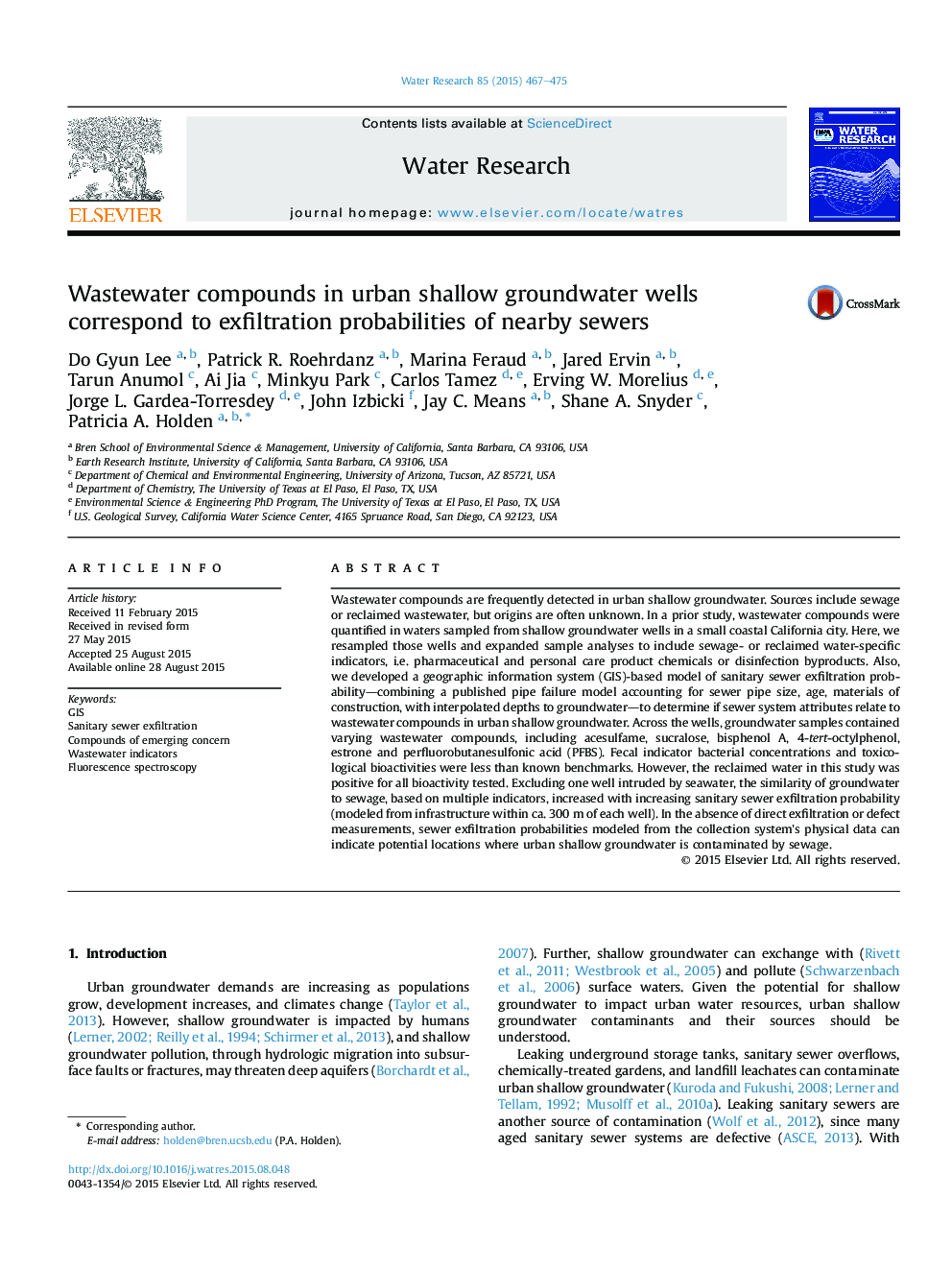| Article ID | Journal | Published Year | Pages | File Type |
|---|---|---|---|---|
| 6365921 | Water Research | 2015 | 9 Pages |
â¢A GIS model aids the identification of urban areas vulnerable to sewage leaks.â¢The estimated sewage-equivalent contamination in shallow groundwater is below 1%.â¢Toxicological bioactivity was observed for this minimally treated reclaimed water.â¢Fluorescence of dissolved organic matter may be useful to screen for sewage leakage.â¢BPA and acesulfame could be suitable indicators of sewage leakage.
Wastewater compounds are frequently detected in urban shallow groundwater. Sources include sewage or reclaimed wastewater, but origins are often unknown. In a prior study, wastewater compounds were quantified in waters sampled from shallow groundwater wells in a small coastal California city. Here, we resampled those wells and expanded sample analyses to include sewage- or reclaimed water-specific indicators, i.e. pharmaceutical and personal care product chemicals or disinfection byproducts. Also, we developed a geographic information system (GIS)-based model of sanitary sewer exfiltration probability-combining a published pipe failure model accounting for sewer pipe size, age, materials of construction, with interpolated depths to groundwater-to determine if sewer system attributes relate to wastewater compounds in urban shallow groundwater. Across the wells, groundwater samples contained varying wastewater compounds, including acesulfame, sucralose, bisphenol A, 4-tert-octylphenol, estrone and perfluorobutanesulfonic acid (PFBS). Fecal indicator bacterial concentrations and toxicological bioactivities were less than known benchmarks. However, the reclaimed water in this study was positive for all bioactivity tested. Excluding one well intruded by seawater, the similarity of groundwater to sewage, based on multiple indicators, increased with increasing sanitary sewer exfiltration probability (modeled from infrastructure within ca. 300Â m of each well). In the absence of direct exfiltration or defect measurements, sewer exfiltration probabilities modeled from the collection system's physical data can indicate potential locations where urban shallow groundwater is contaminated by sewage.
Graphical abstractDownload high-res image (293KB)Download full-size image
